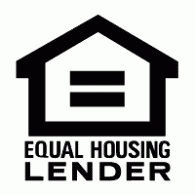- 14362 N. Frank Lloyd Wright Blvd., Suite 2134 Scottsdale, AZ 85260
- Mon - Fri: 8:30am - 6:00pm
What is A Conventional Loan In Arizona?
A conventional home loan in AZ is any mortgage loan that is not insured or guaranteed by the government (such as under Federal Housing Administration, Department of Veterans Affairs, or Department of Agriculture loan programs).

The main difference between a FHA Loan and a Conventional Home Loan in Arizona is that a FHA loan requires a lower down payment, and the credit qualifying criteria for a borrower is not as strict. This allows those without a credit history, or with minor credit problems to buy a home. FHA requires a reasonable explanation of any derogatory items, but will use common sense credit underwriting. Some borrowers, with extenuating circumstances surrounding bankruptcy discharged 3-years ago, can work around past credit problems. However, conventional financing relies heavily upon credit scoring, a rating given by a credit bureau such as Experian, Trans-Union or Equifax. If your score is below the minimum standard, you may not qualify.
In 1934, the Federal Housing Administration (FHA) was established to improve housing standards and to provide an adequate home financing system with mortgage insurance. Now families that may have otherwise been excluded from the housing market could finally buy their dream home.
FHA does not make home loans, it insures a loan; should a homebuyer default, the lender is paid from the insurance fund.
Yes, generally a bankruptcy won’t preclude a borrower from obtaining a FHA Loan. Ideally, a borrower should have re-established their credit with a minimum of two credit accounts such as a car loan, or credit card. Then wait two years since the discharge of a Chapter 7 bankruptcy, or have a minimum of one year of repayment for a Chapter 13 (the borrower must seek the permission of the courts). Also, the borrower should not have any credit issues like late payments, collections, or credit charge-offs since the bankruptcy. Special exceptions can be made if a borrower has suffered through extenuating circumstances like surviving a serious medical condition, and had to declare bankruptcy because the high medical bills couldn’t be paid.
We’ve been helping customers afford the home of their dreams for many years and we love what we do.
Company NMLS: 150459
www.namb.org


© Copyright 2024 Blake Mortgage. All rights reserved.